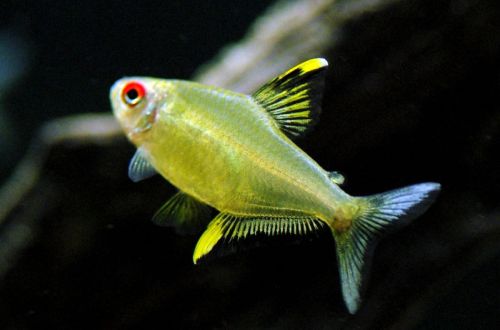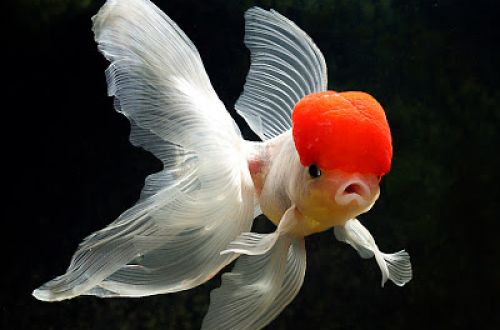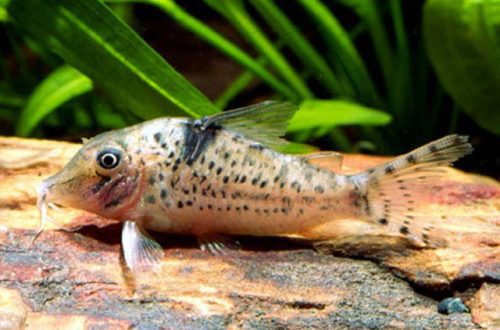
Lemon Tetra
The lemon tetra, scientific name Hyphessobrycon pulchripinnis, belongs to the Characidae family. Curious fish both in behavior and in appearance. It has a beautiful yellow / lemon color, and the color depends on the conditions of detention and the quality of the feed. The color serves as an excellent indicator of the condition of the fish, if it turns silver, then there is a problem.

Contents
Habitat
This species was discovered in the Peruvian Amazon in 1937 and is widely distributed in the tropical zone of South America. In the wild, they prefer shallow sections of the river with a slow flow and dense vegetation, flooded forests. Often they can be found in large groups numbering hundreds, and sometimes thousands of individuals. The fish are successfully acclimatized and massively bred for commercial purposes. Currently, several breeding forms that are not found in the wild have been bred, such as the albino Lemon Tetra.
Description
It has a small laterally compressed body. Coloring lemon color sometimes turning into golden. The anterior part of the anal fin is bright yellow with black edging along its entire length. A distinctive feature of this species are the eyes, they are red.
Food
The Lemon Tetr is perfectly adapted to all types of dry industrial feed, and will also accept live food with pleasure. A variety of foods, such as combining several dry foods throughout the week and including meat products in the diet, enhances the coloration, while the same food has the opposite effect.
Maintenance and care
The main condition for successful keeping is the maintenance of high water quality, which can be achieved by using an effective filtration system and renewing part of the water (25-50%) every two weeks. The lighting system should be set to low light, simulating shady forest streams. Other necessary equipment: heater, aeration system.
In decoration, it is recommended to use dense thickets of plants along the side and back walls of the aquarium in order to leave the central area free for swimming. Artificial elements (castles, ships, etc.), as well as natural stained wood, roots, driftwood, are suitable as shelters. The soil is sandy. A few dry leaves (pre-soaked) will give the water a light brown color that is typical of their natural habitat. Leaves should be replaced every two weeks, which can be combined with cleaning the aquarium.
Social behavior
Friendly, peaceful, gregarious species, excellent neighbor for many species. Should not be kept with large or aggressive fish.
Sexual differences
The male has a brighter color and has a sharp dorsal fin, the female is somewhat larger.
Breeding / breeding
Successfully bred in home aquariums, the best effect is achieved when there are 2 males per female. For spawning, a separate tank with a volume of 3–40 liters is required, the quality and composition of the water must match that of the main aquarium. The set of equipment is as follows: airlift filter, aerator, heater and lighting system. In the design, the presence of floating plants is mandatory, it is on their leaves that fish lay eggs.
The incentive for spawning is enhanced nutrition with the inclusion of meat products in the daily diet. When it is noticeable that the female’s abdomen has become rounded, it has become large, so it’s time to lay eggs. She, along with her partners, is placed in a separate tank, where, after a while, eggs will be laid. After that, the parents are removed to a common aquarium. The fry appear within a few days, fed with microfeed, brine shrimp.
Diseases
Pollution or poor water quality causes damage by fungus and protozoa to the external integument of the body of fish. Under optimal conditions, health problems, as a rule, do not occur, unless sick or infectious fish are added to them. For more information on symptoms and treatments, see the Aquarium Fish Diseases section.





